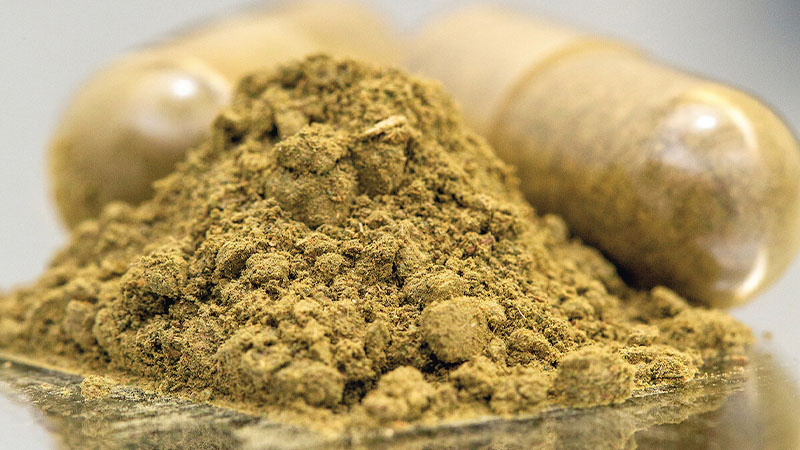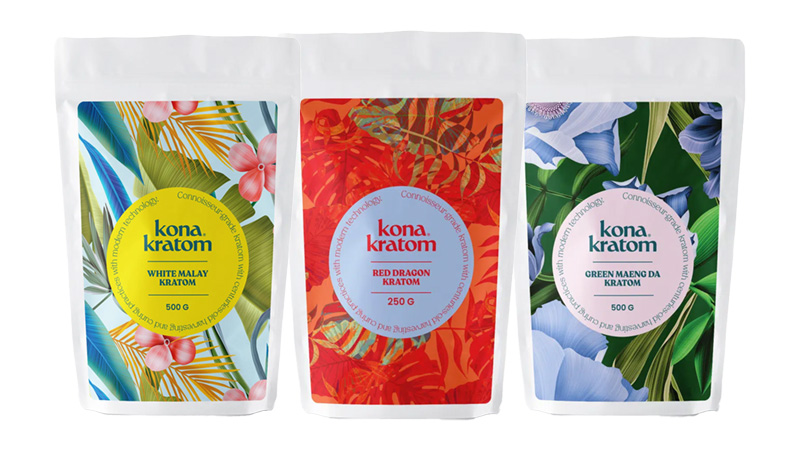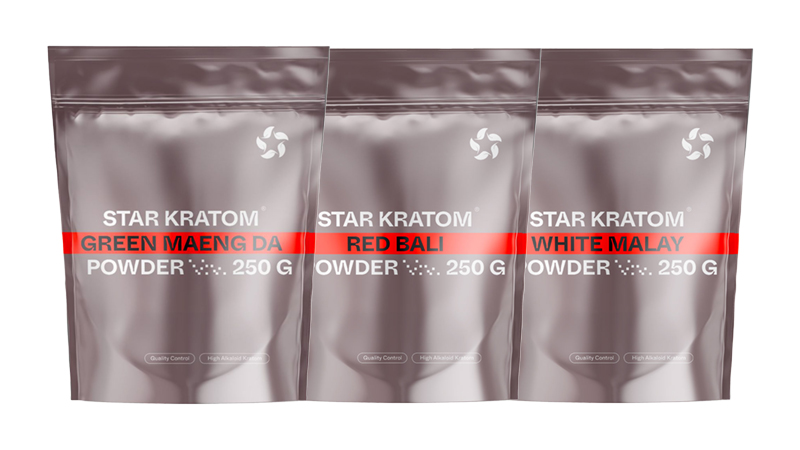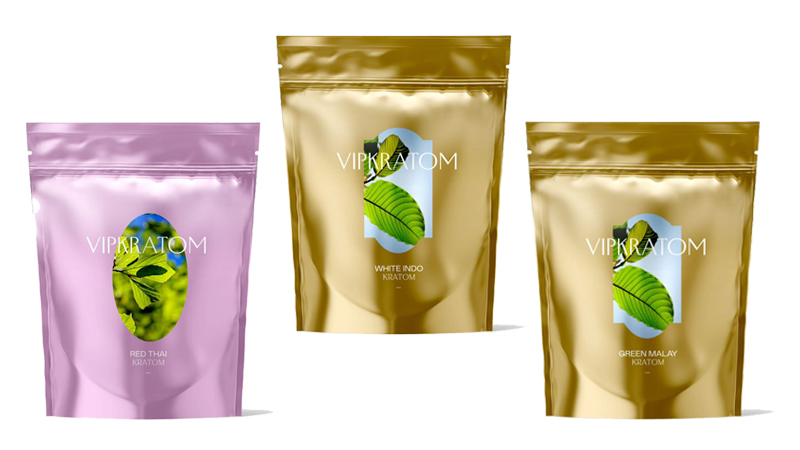Kratom for Opiate Withdrawal — Does It Help?

Opiate medications, taken recreationally or for medical purposes, can be highly addictive. If you use opiates for an extended period, your body can develop a dependency.
This ultimately means that once the medication intake stops, you start to experience unpleasant symptoms, including excessive sweating, uncontrollable trembling, and strong cravings.
Long-duration drugs like suboxone and methadone help wean people off opiates, but in the end, the patient becomes addicted to these other substances.
More people have been using kratom instead of these synthetic drugs since it offers similar relief from withdrawal symptoms and is much easier to quit.
This guide covers everything you need to know about using kratom for opiate withdrawal.
Best Kratom Strains for Opiate Withdrawal
Kratom comes in various strains, each with unique vein colors that tell you what you can expect from the experience.
While white indicates a boost in energy and concentration, red means pain relief and sedation — similar to opioids. These traits are what make red strains ideal for combating opiate withdrawal symptoms.
You’re going to want kratom strains that are powerful and target your opioid receptors with the same intensity that opiates do. Otherwise, you can expect unsatiated cravings — exactly what you don’t want when trying to overcome opiate addiction.
Below, we’ve listed the three most potent and pain-relieving kratom strains. These will target your cravings, ease physical discomfort, and help you feel relaxed.
Maeng Da Kratom

Maeng Da is a highly potent and refined kratom strain. Native to Thailand, Malaysia, and Indonesia, Maeng Da is one of the few strains not native to one specific region.
Maeng Da strains benefit from a higher level of mitragynine and other alkaloids when compared to other kratom strains. Due to this, Maeng Da has the greatest capacity for energy production and pain relief. Its potency means that it interacts with your opioid receptors significantly, which can soothe withdrawal symptoms.
The benefits of Maeng Da kratom are widespread and can help relax the body overall, which is especially helpful when treating symptoms of withdrawal.
Tremors and restlessness are common when experiencing opiate cravings, but Maeng Da can soothe these symptoms with its intense effects. Also, Maeng Da users note the strain’s ability to relieve discomfort from headaches and muscle pain.
Many opiate withdrawal sufferers opt to distract themselves from cravings with new activities. Aside from the physical benefits, Maeng Da clears your mind, so you will be encouraged to participate in healthy hobbies rather than return to your addiction.
Maeng Da kratom can also be used to improve low mood and restore balance to your mind because of how it interacts with the brain’s neurotransmitters. Depression and anxiety can often lead to opiate addicts relapsing.
While Maeng Da is not officially classified as an antidepressant and should not be used as such, it definitely offers some similar benefits.
Benefits of Maeng Da Kratom
- A comprehensive range of benefits
- Stimulation and increased focus
- Steady and full-body pain-relief
- Depression and anxiety relief
Red Bali Kratom

As its name suggests, Red Bali kratom originates from the Indonesian island of Bali. It features a distinctive red vein running through its leaves, which suppliers grind up for consumption in either powdered or capsule form.
Of all the red vein strains of kratom, Red Bali is the most popular, and for good reason! Its relatively quick growth rate makes it easier to produce than other strains. As a result, it’s affordable and accessible to users worldwide.
Like most red vein strains, Red Bali kratom is particularly potent and features strong effects following consumption. Due to its potency, Red Bali kratom does not have the longest duration period. It is ideal for those who want to feel the short-lasting effects that you can feel working.
Red Bali kratom’s primary benefit is relaxation — one of the most effective strains for alleviating discomfort. This directly translates to reducing unpleasant sensations associated with withdrawal. Your muscles feel greater relaxation, which should soothe repetitive tremors.
Those who suffer from chronic pain or discomfort often look to Red Bali kratom to help reduce their unwanted symptoms. Additionally, Red Bali kratom can be used in smaller doses for an extra kick of energy and focus.
Similar to Maeng Da, Red Bali kratom provides both a stimulating and soothing effect in tandem. This is a winning combination for those suffering from restless withdrawal.
Benefits of Red Bali Kratom
- Potent strain with fast results
- Deep relaxation without sedation
- Pain-relief
- Insomnia remedy in high doses
Red Thai Kratom

With less emphasis on stimulation and a greater focus on relaxation, Red Thai kratom is especially effective for treating opiate addiction. Its primary function is restoring balance to both body and mind while simultaneously improving your overall mood.
Native to Thailand, Red Thai kratom gets its name from its red veins that run throughout its leaf, in addition to the reddish tint of its leaves.
The high alkaloid content in this strain makes it one of the best kratom for opiate withdrawal. It interacts with your opioid receptors to produce a soothing, sedate response that doesn’t cause lethargy. It is a powerful stress reliever that can profoundly help those who struggle with persistent cravings.
Unlike the other two strains on our list, Red Thai does not usually feature a boost in energy. You may feel more balanced and, therefore, able to focus better, but you won’t necessarily receive an ‘extra kick.’ However, this isn’t a negative.
This lack of energy boost means Red Thai is perfect for treating insomnia when used in higher doses. Just make sure to read the dosage information on the product label, as excessive amounts can bring unwanted side effects.
Benefits of Red Thai Kratom
- Pain-relief
- Deepest sedation
- Insomnia treatment
How Does Kratom Work for Opiate Withdrawal?

Continued use of opioid medication, such as Oxycontin and Roxicodone, can result in severe dependency or addiction. Your body becomes so used to the drug that it can’t function properly without it, causing withdrawal symptoms once the supply is no longer present.
Withdrawal is profoundly uncomfortable — even painful — often leading to shaking and sweating. Cravings can become so strong it’s difficult to concentrate on anything but your next dose.
With this in mind, it’s easy to see why so many addicts fear stopping, despite the many negative side effects of continued use.
Studies show kratom minimizes withdrawal symptoms due to its interaction with opioid receptors. Your body still feels as though it is getting its fix, just without the drawbacks.
When you ingest kratom, alkaloids like 7-hydroxymitragynine and mitragynine are released into your body. These alkaloids interact with the mu-opioid receptors, similar to opioids. However, unlike opioids, this process does not cause a strong addiction or a change in body chemistry. It’s a temporary effect that numbs our body’s pain receptors and triggers mental effects.
Incredibly, kratom’s effects fight addiction in more ways than one.
Kratom can help soothe the discomfort of tremors and muscle aches you may experience when weaning off opiates. The overpowering nature of cravings can be effectively mediated by kratom, as it helps the mind focus on daily tasks better. You aren’t as likely to get distracted, so your cravings are less likely to interfere with your day.
These alkaloids tell the brain to release dopamine and turn off cortisol, the “fight or flight” hormone that tells us to panic. As a result, you get an experience that mimics the effects of opiates without the same addictive qualities. Your brain encourages you to relax, which decreases the depression, anxiety, and stress that tend to cause relapse.
To summarize, kratom can ease withdrawal symptoms in the following ways:
- Some of the kratom’s alkaloids act like opioids, reducing the intense cravings
- Kratom effectively reduces the depression and anxiety common with addiction
- White strains produce euphoric feelings, energy, and focus, encouraging activities beneficial to one’s health
- Red strains are relaxing and potent pain killers, helping with the physical discomforts of withdrawal
How to Use Kratom for Opiate Withdrawal
Knowing which strain to use for opiate withdrawal is the crucial first step. After all, a white strain just won’t cut it for these purposes.
But what next? What do you do with it?
Finding the Right Dose
First, find out how much kratom to take. Too little will be ineffective, but too much can make you feel sick.
This takes some experimenting. There is no one-size-fits-all recommendation.
In general, overcoming opiate addiction requires larger amounts — 5-15 g. However, don’t jump in at the 10 g mark. Start low and take note of the effects. Increase the amount by half to a full gram at a time, but wait a few hours before adding more.
Create a Weaning Schedule
Kratom works like substitute therapy to help users quit opiates. It’s the same concept as suboxone therapy, except instead of using a synthetic drug, kratom is used.
The idea is simple — each day, you increase the amount of kratom you’re taking and decrease the number of opiates. This can happen gradually to minimize the withdrawal symptoms or more quickly to get the process over with.
Start by making a schedule, and stick to it. It’s wise to speak to a doctor about this to help create a custom schedule that works for you. The higher your tolerance to opiates, the longer it’s going to take.
You should take as much kratom as you need to reduce cravings and withdrawal symptoms to a manageable level — but understand that cravings won’t be eliminated entirely. This process needs to happen in order to reverse the dependency. Kratom should only be used to take the edge off and provide enough comfort to keep the detoxification process going.
Once you’re no longer using opiates, you can start to wean yourself off kratom by taking less and less. There will be some withdrawal symptoms from this too, but they tend to be much more bearable than they are with synthetic opioids.
Here’s a weaning schedule for context (adjust as necessary):
| Week 1 | Take 80% of your normal dose of opiates and 2–5 grams of kratom |
| Week 2 | Take 60% of your normal dose of opiates and 3–7 grams of kratom |
| Week 3 | Take 40% of your normal dose of opiates and 4–10 grams of kratom |
| Week 4 | Take 20% of your normal dose of opiates and 5–12 grams of kratom |
| Week 5 | Take 10% of your normal dose of opiates and 5–12 grams of kratom |
| Week 6 | Stop taking opiates entirely but keep taking 5–12 grams of kratom |
| Week 7 | Take 75% of your normal dose of kratom |
| Week 8 | Take 50% of your normal dose of kratom |
| Week 9 | Take 25% of your normal dose of kratom |
| Week 10 | Stop taking kratom entirely |
Kratom Powder: 5 Ways to Use It
If you have capsules, this step is a no-brainer. But there are many ways you can take the powdered form of kratom — just brace yourself for the taste. It’s not fantastic.
Here are the top three ways to use kratom powder, though there are other options besides these:
- Brew a tea: Take your dose of kratom and add it to a cup of water. Bring it to a simmer for a few minutes, let it cool, and drink it. Pro tip — Add lemon or a sweetener (or both!) to make it more palatable. Lemon juice will also boost the effects.
- Toss and wash: This isn’t for the faint of heart. For this method, put the liquid and the dose of kratom into your mouth, then swallow.
- Add it to food: This works great if you struggle with the taste. Simply take your dose and add it to a smoothie, salad dressing, etc. Just make sure you eat or drink the whole dose.
- Parachute it: This is a simple and cheap substitute for capsules. Take a small piece of toilet paper, add your dose, wrap it up, and wash the little package down with a drink.
- Drink it: Kratom doesn’t dissolve, so this means stirring often, but many users add the dose to a drink and take it that way. Waterworks, but juice or tea help mask the taste.
Is Kratom Safe?

One common problem with opiate abuse is respiratory depression, the leading cause of death in overdose cases.
Kratom has minimal side effects, even in higher doses, and is unlikely to cause serious issues, including overdose.
Research shows kratom is well-tolerated by most people and is much safer than opioids overall. In fact, in 2021, the World Health Organization (WHO) reviewed the dangers of kratom use and stated it is safe and not a threat to public health.
One study in 2019 assessed the mortality rates of opioids compared to kratom and found that the risk of overdose death was 1000 times greater for opioids than for kratom.
Studies also show that unknown factors — combining substances, underlying health issues, contaminated products, etc. — accounted for the majority of deaths involving kratom.
However, there are still side effects and dangers associated with kratom use, especially in higher doses and long-term use — treating opioid addiction can require both.
Here’s a look at what adverse effects you might encounter with kratom and how to use it safely.
Kratom’s Side Effects
Unless you’re new to kratom, low doses (2-5 g) rarely cause side effects. Larger amounts (6-12 g), like those needed for opioid withdrawal, can cause some discomfort — but these side effects are more of a nuisance than dangerous.
Common side effects include:
- Dizziness or the wobbles
- Nausea
- Vomiting
- Headache
- Lethargy
- Constipation
- Diarrhea
- Anxiety
More severe side effects include:
- Liver damage
- Hormonal issues
- Depression
- Addiction
While addiction is never a good thing, it’s helpful to know that kratom addiction is nowhere near as strong as opioid addiction. It’s less dangerous, harder to become dependent on, and easier to break free from.
It’s hard to use less or take a break from kratom when dealing with opioid addiction, but you can find the right balance with proper help and oversight.
Is Kratom An Opioid?
No. Even though kratom has alkaloids that closely mimic opioids, it is not classified as one. There are some key differences.
For one, kratom interacts with other systems, not just opioid receptors. Studies show it also affects the adrenergic system and kratom’s alkaloids have a host of other benefits — some are antibacterial, some are neuroprotective, and some fight malaria.
Kratom can also relax muscles; something opioids are unable to do.
Is It Possible to Overdose on Kratom?
Technically yes, but it’s very difficult to reach that point.
Kratom causes nausea and vomiting in large amounts, so it’s more likely to be thrown up than cause an overdose.
Even if you take too much and keep it down, you’ll probably just be uncomfortable for a while until you sober up. It doesn’t impact the opioid receptors that control breathing to the degree opioids do, so respiratory depression is unlikely, meaning death by overdose is extremely rare.
That said, if you pass out, start hallucinating, or violently throw up, head to the emergency room or call 911.
General Tips on Using Kratom Safely
It would be irresponsible to pretend there are no dangers associated with kratom. There are some very real risks, but here’s the good news — they’re avoidable!
Follow these tips and stay safe:
-
Never Combine Kratom With Other Substances or Medications
Kratom can interact negatively with many medications, supplements, and substances. One main way is metabolic competition. Anything that passes through you must be metabolized. When two compounds require the same enzyme for metabolization, it slows the process down, allowing the compounds to stay in the body longer than normal.
Sometimes this isn’t a big deal, but other times it can be deadly. As we already mentioned, almost all overdose deaths involving kratom also involve another drug — usually opioids, benzos, or cocaine — and it’s because of this slow metabolization.
However, prescription medications can also be risky, so always check with your doctor before using kratom if you’re already taking something else, no matter how trivial it seems.
- Take the Smallest Amount Possible & for the Shortest Amount of Time
Even if you start with small doses, eventually, a tolerance will build, and the amount will grow. Addiction is right around the corner if kratom use is heavy and often.
To keep tolerance at bay, take a break from kratom one or two days out of the week and for a whole week every month or so. These steps will limit your intake and keep it at a healthy level.
- Only Buy Kratom from a Reputable Vendor
Another huge risk with kratom is contaminated or unsafe products. There are thousands of places to buy kratom, but not many of them are worth the time or money.
Kratom is unregulated in most places, so no entity is watching dutifully to make sure everything is processed, packaged, and sold with integrity. That job is on your shoulders.
Fortunately, trustworthy businesses take great care to stand out from the crowd.
Tips on Vetting a Kratom Vendor:
- Look for third-party test results so you can check the content of the kratom. These should test for impurities like heavy metals and bacteria, along with alkaloid content.
- Check for certification from the American Kratom Association. This non-profit group runs strict quality checks annually on each of its members. If they don’t meet the criteria, they don’t receive certification.
- Read customer reviews. Make sure the company keeps its customers happy and has a solid track record with them.
Where to Buy the Best Kratom for Opiate Withdrawal?
Now that you have a better understanding of how kratom works let’s talk about where to get the best kratom for opiate withdrawal.
The increasing popularity of kratom means that competition among vendors is growing. There are a lot of places where you can get kratom, but not all are trustworthy. You’ll need to find a trustworthy kratom vendor that has close relationships with suppliers, product tests its strains and has American Kratom Association (AKA) approval.
Listed below is a selection of our favorite kratom vendors that meet these strict criteria. Whether you are shopping out of curiosity or specifically for the best kratom for opiate withdrawal, these vendors carry the safest, highest-quality, and overall best kratom for opiate withdrawal.
Kona Kratom
When you first visit Kona, you’ll be amazed at the variety of strains for an affordable price. This massive and affordable inventory has become the company’s signature, and customers love that they can shop for an unlimited number of strains.
Kona Kratom covers all the bases. From the standard Borneo and Malay strains to the more exclusive Maeng Da strains, there’s sure to be something that catches your eye. They also offer a full money-back guarantee if you’re not happy with your order.
Key Points
- Huge inventory of the best kratom for opiate withdrawal
- Close relationships with suppliers in Southeast Asia
- American Kratom Association (AKA) approval
- Third-party product testing
Star Kratom
Though most vendors have been in the industry for several years, Star is new to the game. However, that doesn’t mean this seller isn’t a heavy-hitter. You can get your order 2-3 days faster than the competition when you purchase from Star Kratom. This vendor benefits from close access to a major shipping hub, and they send kratom to customers all day long.
Choose Star not just because of the shipping speed but also because of the quality of strains. This company has been open for less than a year and already has AKA approval. If this isn’t a testament to its legitimacy and quality, we don’t know what is!
Key Points
- Boutique, brand-new vendor
- Fastest shipping
- Intimate customer support team
- American Kratom Association (AKA) approval
- Third-party product testing
VIP Kratom
Sometimes, simplicity is the best approach. On VIP Kratom’s website, all of their products are listed by their strain and color, without any of the usual marketing fluff getting in the way. You can find exactly what you’re looking for with ease.
In addition to that, all of their products must meet the team’s high standards. You might not walk away with the cheapest kratom, but you’re getting the most potent strains possible. If you’re trying to remedy intense opiate withdrawal symptoms, VIP Kratom is the way to go.
Key Points
- Powerful and high-quality strains
- Team with high standards
- Curated strains for potency
- Intimate selection
Summary: The Best Kratom for Opiate Withdrawal
Opiate addiction can be incredibly difficult to overcome. Kratom has the potential to help you ease off an opioid without going cold turkey. You’ll benefit from potent pain relief and mental clarity. You may even enjoy insomnia relief, depending on your dosage.
No singular strain is the best kratom for opiate withdrawal. However, we recommend Maeng Da, Red Bali, and Red Thai for unique reasons. Maeng Da offers comprehensive effects, while Red Bali and Red Thai are intensely pain-relieving. The right one for you largely comes down to personal preference!
You can also choose powdered, capsule, or liquid form. Most people brew these strains into tea and use them as substitutes for coffee. There is no one way to take kratom — the options are wide open.
Check out our three vendors to get the best kratom for opiate withdrawal. You’ll receive the attention from their customer support teams you need to make the right decision and guarantee you’re getting the best quality possible.


